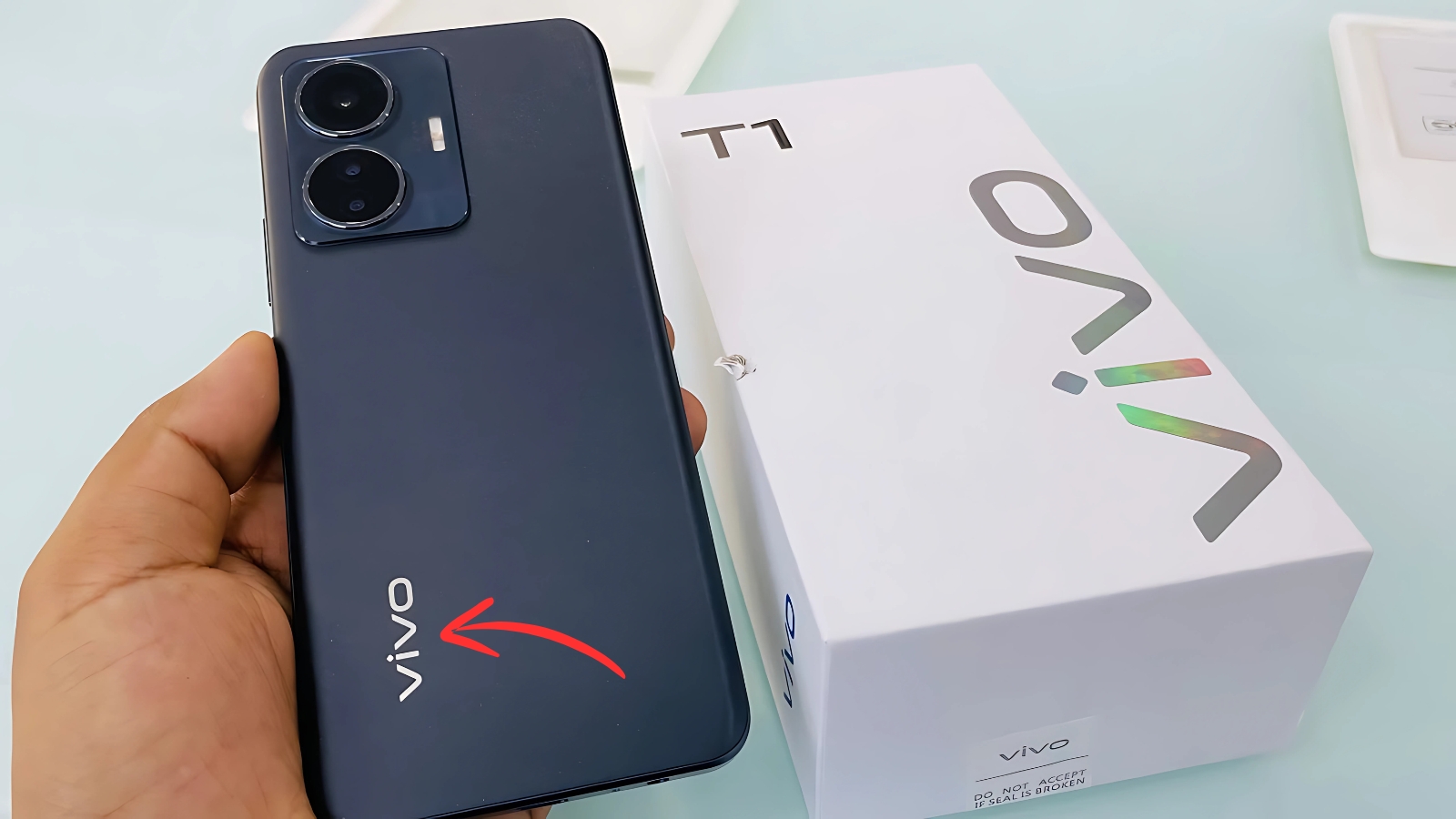Vivo T1 : The mid-range smartphone battlefield keeps getting more intense, and honestly, that’s great news for consumers. Every manufacturer seems determined to cram flagship features into affordable packages, creating a race to the bottom in pricing while simultaneously pushing performance upward. Vivo’s T1 enters this crowded arena with a slightly different pitch – instead of trying to be everything to everyone, it focuses heavily on gaming performance and youthful aesthetics. The question is whether this targeted approach resonates with buyers or simply limits its appeal.
Design Choices That Scream Gaming Credentials
Right from the unboxing experience, the T1 makes it clear which demographic Vivo is targeting. The packaging itself feels more like a gaming peripheral than a traditional smartphone box, complete with bold graphics and technical specifications prominently displayed. The phone’s back panel features a distinctive design language that borrows heavily from gaming laptop aesthetics – angular lines, bold color accents, and a camera module that looks almost architectural.
The 6.58-inch display occupies most of the front real estate, with relatively slim bezels that don’t immediately scream “budget device.” The 120Hz refresh rate represents the T1’s most significant selling point for gaming enthusiasts, delivering smooth scrolling and responsive touch interactions that make a noticeable difference during fast-paced gaming sessions.
Build quality feels solid without being exceptional. The plastic construction doesn’t try to masquerade as premium materials, which feels honest rather than disappointing. The phone’s weight distribution creates a comfortable grip during extended gaming sessions, suggesting Vivo’s designers actually considered how people hold their devices during intensive use.
The color options reflect the gaming-focused marketing strategy, with names like “Starlight Black” and “Rainbow Fantasy” that sound like they were borrowed from RGB keyboard marketing materials. While some might find this approach over the top, it clearly resonates with the target audience who appreciate devices that look as gaming-focused as they perform.

Performance That Delivers on Gaming Promises
The Qualcomm Snapdragon 778G processor represents a smart choice for the T1’s positioning. This chipset provides enough computational power to handle demanding games smoothly while maintaining reasonable power efficiency for all-day battery life. Paired with up to 8GB of RAM, the system manages multitasking admirably without the slowdowns that plague many mid-range devices.
Gaming performance lives up to Vivo’s marketing claims more often than not. Popular titles like PUBG Mobile and Call of Duty Mobile run smoothly at high settings, with frame rates remaining stable during extended play sessions. The 120Hz display genuinely enhances the gaming experience, making fast-paced action feel more responsive and visually smooth.
Thermal management deserves particular praise because sustained gaming sessions can quickly overwhelm inadequate cooling systems. The T1 handles heat dissipation reasonably well, though extended gaming marathons will eventually cause some performance throttling. This limitation feels more like physics than poor engineering – you can only dissipate so much heat from a thin smartphone chassis.
The 5000mAh battery provides excellent endurance for typical smartphone usage, though intensive gaming will drain it more quickly than lighter tasks. The 44W fast charging helps offset this limitation, providing enough juice for several hours of use with relatively brief charging breaks.
Camera Performance That Exceeds Basic Expectations
The 64MP primary camera produces results that vary significantly depending on lighting conditions, which is pretty typical for this price segment. In favorable lighting, photos show good detail and acceptable color reproduction, though dynamic range limitations become apparent in challenging situations.
The ultra-wide camera adds versatility for landscape shots and group photos, though image quality drops noticeably compared to the main sensor. Portrait mode works reasonably well when it functions correctly, creating convincing background blur effects that enhance social media sharing.
Low-light photography remains challenging, as expected for this hardware level. Night mode helps somewhat by combining multiple exposures, but don’t expect miracles in genuinely dark environments. For most users taking photos in reasonable lighting conditions, the camera system delivers acceptable results without being exceptional.
Kawasaki Z900 – 255km high speed motorcycle launch with dangerous design
Software Experience That Balances Features and Performance
Funtouch OS, Vivo’s Android skin, has improved significantly in recent iterations. The interface feels less cluttered than previous versions while retaining enough customization options to satisfy users who enjoy tweaking their experience. Gaming-focused features like Game Mode provide tangible benefits during intensive sessions, optimizing system resources and minimizing distractions.
The software includes various gaming enhancements that actually work as advertised. Performance monitoring tools help users understand how their device is handling demanding applications, while system optimization features can free up resources when needed.
Vivo T1 Market Reality Check and Value Assessment
In the crowded mid-range segment, the T1’s gaming-focused approach helps it stand out from generic “balanced” smartphones that don’t excel in any particular area. For users who prioritize mobile gaming performance above camera quality or premium materials, the T1 offers compelling value that justifies its positioning and pricing strategy.
